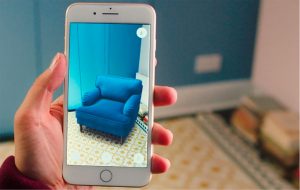When we talk about Virtual Reality (VR), many think of science fiction films like ‘Ready Player One.’ However, the truth is that nowadays, this technology completely blends in with our daily lives: video games, medicine, education. Virtual reality is here to stay. But what is it exactly?

Virtual Reality (VR) is a computer-generated environment with objects that appear to be real, making the user feel immersed in their environment. This environment is perceived through a device known as a Virtual Reality headset or helmet. VR allows us to engage ourselves in video games as if we were one of the characters, learn how to perform heart surgery, or improve the quality of sports training to maximize performance. Although this may seem incredibly futuristic, its origins are not as recent as we might think. Many people consider that one of the first Virtual Reality devices and were called Sensorama, a machine with a built-in seat that played 3D movies, gave off-odors and generated vibrations to make the experience as vivid as possible. It is also quite common to confuse the term Virtual Reality and Augmented reality.
The main difference between the two is that VR builds the world in which we immerse ourselves through a specific headset. It is fully immersive, and everything we see is part of an environment artificially constructed through images, sounds, etc. On the other hand, in augmented reality (AR), our world becomes the framework within which objects, pictures, or similar are placed. Everything we see is in a real environment, and it may not be strictly necessary to wear a headset. The brightest and most mainstream example of this concept is Pokémon Go. While VR is known for transforming the gaming and entertainment industry in particular, with consoles and handhelds adapting their games for VR, the gaming experience has been utterly remodeled and improved all around. Technology will be able to create an experience for humans where we cannot tell the difference between the virtual and real-world, with the merging of augmented reality and VR. Virtual reality will provide the experience many of us would love, allowing us to see what life is for an entirely different perspective. By 2030, virtual reality is set to help the healthcare and medical industry help people control and overcome these fears. Consumers will able to try on clothes in virtual reality changing rooms, where they will be able to see how items fit on them. Although augmented reality is less explored than virtual reality due to technology limitations, lack of standardization, and a higher price tag, it is already being utilized in manufacturing, healthcare, and logistics. Augmented reality experiences are typically delivered through headsets, such as Meta, ODG, Vuzix, and HoloLens. They are showing early signs that the technology is set to transform commercial and industrial markets. However, there is still work to be done before these technologies can reach mainstream adoption.

Today, we’re in a state of compromise with augmented and virtual reality devices. None of the existing systems give users a complete, great, and immersive experience. Most of the systems lack a natural, wide field of view, have limited display resolution, low brightness, short battery life, and lacking 3D sensing capabilities. It will be another three to five years before we will experience real, unconstrained capabilities of AR/VR applications. But once it comes into play, it will change the industry. It will also be accompanied by more powerful computers and personal computers and chipsets. We all have heard about the next big thing in personal computing: Quantum computers, and day by day, it becomes a reality. It will impact our science and our understanding of space and so much more.









